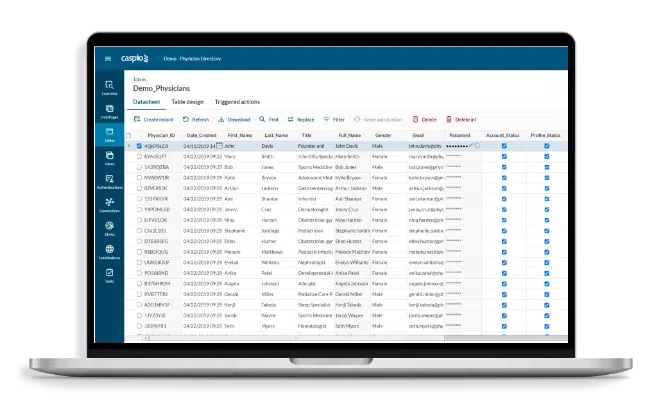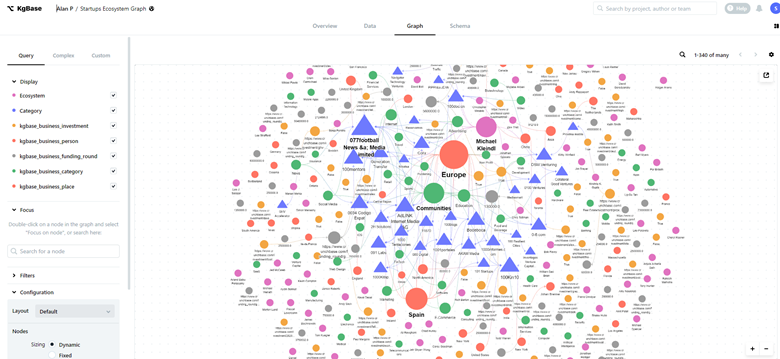A Comprehensive Overview to Implementing Scalable Data Sources Without the Requirement for Coding Knowledge
In the modern landscape of data management, the capacity to carry out scalable databases without coding proficiency is coming to be significantly essential for companies of all sizes. What are the essential aspects that can truly encourage these individuals to take advantage of scalable databases properly?
Comprehending Scalable Data Sources
In the realm of modern-day data monitoring, scalable data sources have emerged as a vital solution for companies looking for to take care of boosting volumes of info successfully. These data sources are created to fit development by enabling the smooth enhancement of resources, whether via horizontal scaling (adding much more makers) or vertical scaling (updating existing devices) This flexibility is essential in today's fast-paced digital landscape, where data is generated at an unmatched rate.
Scalable databases generally make use of distributed architectures, which enable data to be spread across several nodes. This distribution not only boosts performance but also provides redundancy, ensuring information availability also in case of hardware failings. Scalability can be an essential element for numerous applications, consisting of e-commerce systems, social networks networks, and huge information analytics, where user need can rise and fall dramatically.
In addition, scalable databases usually feature robust information consistency designs that stabilize performance and dependability. Organizations has to consider their certain demands, such as read and compose rates, information honesty, and fault resistance when selecting a scalable data source solution. Eventually, comprehending the underlying concepts of scalable data sources is crucial for services intending to prosper in a significantly data-driven globe.
Trick Attributes to Search For
When examining scalable databases, numerous vital functions are vital to guaranteeing ideal performance and integrity. Consider the architecture of the data source. A distributed design can improve scalability by allowing information to be kept across numerous nodes, promoting smooth information gain access to and processing as need boosts.
Another critical attribute is data dividing, which enables efficient management of large datasets by separating them into smaller, a lot more workable pieces (no-code). This technique not only boosts performance yet also streamlines source allowance
Additionally, seek robust duplication capabilities. This attribute guarantees data redundancy and high accessibility, reducing downtime during maintenance or unanticipated failures.
Performance monitoring tools are also essential, as they offer real-time understandings into system wellness and operational efficiency, permitting prompt adjustments to maintain optimal efficiency.

User-Friendly Database Devices
Simplicity is a crucial element in the design of easy to use data source tools, as it improves ease of access for users with varying levels of technological expertise. no-code. These devices prioritize instinctive interfaces, enabling individuals to create, take care of, and query data sources without needing extensive programs knowledge
Secret features normally include drag-and-drop performance, aesthetic data modeling, and pre-built design templates that streamline the setup procedure. Such devices commonly provide assisted tutorials or onboarding processes that assist in user interaction and minimize the learning curve. In addition, seamless combination with preferred data sources and solutions makes sure that users can quickly import and export information, further simplifying procedures.

Furthermore, durable assistance and community sources, such as forums and documentation, boost the this page individual experience by providing aid when required. In general, easy to use data source tools encourage organizations to harness the power of scalable data sources, making data management easily accessible to everyone entailed.
Step-by-Step Implementation Overview
How can companies effectively apply scalable databases to fulfill their growing information demands? The procedure begins with determining specific data needs, including the quantity, selection, and velocity of data that will certainly be processed. Next off, companies ought to examine user-friendly database tools that offer scalability functions, such as cloud-based options or managed data source solutions.
As soon as the right device is selected, the following action involves configuring the data source environment. This includes establishing circumstances, specifying user authorizations, and developing data structures that line up with organization purposes. Organizations should then migrate existing information right into the brand-new system, making sure information honesty and minimal disruption to operations.
Post-migration, carrying out complete screening is crucial; this includes performance testing under various tons conditions to make sure the system can take care their website of future growth - no-code. Additionally, it is necessary to train personnel on the database administration user interface to assist in seamless usage
Best Practices for Management
Effective management of scalable databases requires a strategic method that prioritizes ongoing tracking and optimization. To achieve this, organizations ought to execute robust monitoring devices that give real-time understandings right into data source performance metrics, such as query response times, source application, and purchase throughput. Routinely analyzing these metrics can help determine bottlenecks and areas for renovation.

Routine back-ups and calamity recovery plans are necessary to safeguard data stability and accessibility. Establishing a routine for checking these back-ups will certainly make certain a dependable healing procedure in instance of an unexpected failure.
In addition, performance adjusting ought to be a continual process. Readjusting indexing methods, optimizing inquiries, and scaling resourcesâEUR" whether up and down or horizontallyâEUR" will aid maintain ideal efficiency as usage needs develop.
Last but not least, fostering a society of expertise sharing among staff member will make it possible for constant discovering and adaptation, making sure that the monitoring of scalable databases stays efficient and efficient with time.
Conclusion
To conclude, the execution of scalable databases can be efficiently attained without coding competence via the utilization of user-friendly tools pop over here and instinctive user interfaces. By adhering to the outlined strategies for configuration, data movement, and efficiency testing, individuals can navigate the intricacies of database administration easily. Stressing finest methods for recurring maintenance and cooperation more boosts the capability to manage scalable databases successfully in a swiftly evolving data-driven environment.
In the modern landscape of data monitoring, the ability to carry out scalable data sources without coding knowledge is ending up being progressively important for companies of all sizes.In the realm of contemporary data administration, scalable databases have actually emerged as a vital solution for companies looking for to handle increasing volumes of information effectively.Moreover, scalable data sources usually feature durable information uniformity models that balance efficiency and dependability.Just how can organizations properly apply scalable databases to satisfy their expanding data demands? Next, organizations need to examine straightforward database devices that provide scalability functions, such as cloud-based services or managed database solutions.